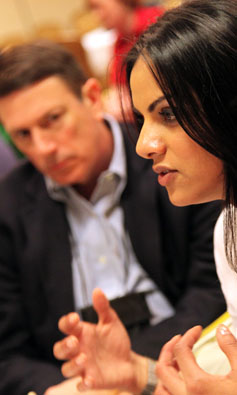The Development Process
Many of our clients initially ask about the process of developing a themed attraction and the various requirements and processes to bring it to fruition and then to continued successful operation. In short, the process of developing a themed attraction business has many pitfalls and challenges since a themed attraction, as distinguished from other commercial developments, involves the development of a community within the community – with all the attendant infrastructure, governance, education, safety, communications and operations aspects. The programming, theming, placement, flow, adventure, appeal, and operation of each aspect of the whole must be carefully orchestrated.
It is more like writing a script and directing and producing a play, for the show runs daily and the entire experience must remove the guest from his world to another believable and yet mystical world. This is the world where treasured moments lead to the creation of treasured memories for generations to come. It is not a static monument of buildings and structures but an ever-evolving place to create stories. The ability to garner international resources to enrich the lives of families within unique communities is a cornerstone of PARC. Planned and orchestrated correctly, our parks become the social and entertainment hub of the communities we serve, our team members find training and mentoring to help them succeed in life, and our parks positively transform communities and add a new refreshing and renewing chapter to the rich history of the community.
At the same time the construction techniques are elaborate, the operations elements are required to work every time flawlessly, and the guest must never be distracted by the tremendous behind-the-scenes efforts. It must operate in such as manner as to appear effortless. But, it is far from effortless.
As a result of these requirements, the planning process required to support the development of a sustainable themed attraction business is elaborate and exacting. The planning process begins with a detailed demographic and feasibility study. Next, the general theme of the attraction is developed. From that, the concept master plan is defined and the storyline begins to take shape. The physical site is studied, the topology and geology studied, and a general layout plan developed. At the same time the history and culture is studied to ensure the creation of a rich, seamless, relevant, and historically accurate and integrated amenity. The master plan is then closely reviewed and refined over a long period of study to ensure the placement and programming of each element is consistent with the parameters determined in the feasibility study and the chosen theme and experience. Review is taken to ensure the master plan is consistent with the story line, and is operationally viable. Each aspect of the attraction is then further reviewed, planned, and drawings are developed to begin the cost estimating process. This includes not only the buildings but also the site plan, utilities, technology infrastructure, FF&E definition and placement, landscaping, drainage, theming packages, entertainment elements, scripting the shows, the food and beverage facilities, selecting the appropriate retail merchandise and every aspect of the daily production.
Overlaid on this entire process is the development of the financial / economic model which seeks to define the attraction as a working economic model to determine the appropriate capital structure and operating parameters. Staffing plans, operational hours, job descriptions, training and costume requirements, marketing, communications, community relations, promotion, entertainment, event and technology plans are developed along with the food and beverage menus and retail offerings. The script planning is designed to appeal to those who seek adventure and thrill elements for their story, as well as those who seek relaxation and renewal. Each aspect of the operation must be carefully planned, challenged, reviewed, and consistently enhanced to ensure that it exceeds guest expectations, adheres to the story line and conforms with the economic model.
Most projects undertaken by local developers never make it to this point. The reason is simple: most developers grow weary of the process and eventually run out of money. In the context of the Project, it appears that the market is compelling, the government brings its support, and the individuals responsible for the development are very skilled and passionate about the project and its benefit to their community. This is a fertile ground upon which PARC can assist you in ensuring the development and orchestration of a highly successful project.
↑ Top

